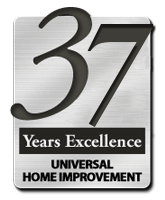What's The Difference Between A Trench Drain and A French Drain?

The difference between a Trench drain and a French drain is that a trench drain aims to remove excess water from the surface, while a French drain is responsible for capturing and removing excess water from problematic land areas.
A trench drain is lined with materials such as concrete and steel grates, usually set on the perimeter. In contrast, a French drain uses gravel or rocks, usually set to prevent moisture in basements, driveways, and lawns.
What Is A Trench Drain?
A trench drain is a system of removing excess water on the surface through the application of a drainage tunnel. This method uses a grate to evacuate water. Different types of trench drains include channel drains, slot drains, prefabricated trench drains, and radius trench drains.
What is a French Drain?
A French drain is a water drainage system where a trench is dug, and filled with stones or gravel. Initially, this method was popularly used in farming. Excess water was drained to prevent flooding, which in turn improved the yields. Types of French drains include surface French drains, trench French drains, and blind French drains.
Why Universal Home Improvement?
Location: Trench Drain vs French Drain
A trench drain system is below the surface. They are designed in different styles.
Since a French drain is built in problematic land areas, it is designed to face downhill. This redirects the flooded water downward slope through the pipe.
Purpose: Trench Drain vs. French Drain
The purpose of a trench drain is to prevent damage to the landscape. To prevent water from accumulating on the foundation of a house, it ensures that water is redirected away from the foundation. Damages such as cracking are avoided. Stagnant water can cause swamping. However, this method of drainage lessens swamping.
A French drain works to pool stagnated water on the surface by providing a path to redirect it to a better water drainage location. The water can be collected and used for watering plants once the rainy season is over.
Construction: Trench Drain vs. French Drain
Construction of a trench drain involves;
- Dig a trench, as you create a 4 inches space (on all the sides) for concrete backfill.
- After the digging, any debris and stones left should be evacuated. A 2-inch string is placed at the end of the channel height. The trench’s foundation is built by spreading sand across the trench, preferably 2- inches. The sand should be pressed down completely, using a shovel.
- The trench drain should be placed at an appropriate height. The height should equal the string placed earlier. The end drain outlet is then connected to the drain pipe. Ensure you caulk the joints. This helps prevent any leakages.
- The drain channel is then taped after the caulking has dried.
- This next step is pouring the concrete.
- The tape that was used earlier after the caulking had dried is then removed. You can place the drain covering on top of the channel opening.
Installation of a French drain system involves;
- Analyzing and selecting the best place for redirecting water away.
- Ensure the trench dug has a slight slope. This enables gravity to work to your advantage, as it will drain water well.
- The bottom of the trench should be filled with gravel.
- A pipe is be connected through the trench, after installing a grate.
- A gravel is used to cover the pipe.
- The final stage of the process is covering with grass or landscape gravel.
- Annual maintenance should be done to make sure the drainage system works well.
Application: Trench Drain vs. French Drain
A trench drain system is often used in residential homes. It is effective because it ensures the area is not flooded and the foundation of the house is not damaged. Trench drains are applied in driveways and walkways as well. Commercial applications of trench drains are built in a way that performs their function and allows persons using wheelchairs to access the buildings safely. Carwashes, restaurants, spas, and food processing plants are some businesses that use this type of drainage system in areas that constantly use water for cleaning and rinsing.
Since a French drain application is effective in areas where water floods into your basement, when there is a problem of water retention on the surface, and when a retaining wall is built on a hillside, it is an effective method of drainage to use. Building a French drain prevents water from flooding because it intercepts the water. This drainage system also prevents water from building up behind the wall when a pipe is placed on a concrete footing, which will offer support to the wall.
Maintenance: Trench Drain vs. French Drain
Maintaining a trench drain includes cleaning, flushing, and inspection. When cleaning, any visible debris or dirt is removed. The grates are thoroughly brushed and rinsed with water. The next step is to flush away any accumulated dirt and debris down the trench. Lastly, the drain is inspected for any signs of damage, corrosion, or cracks. You are advised to call a professional if you need any damages.
Accumulation of debris causes clogging and breeding of mosquitos in the area. Therefore, it is important to clean the French drain regularly. An electric sewer snake is a motorized machine that is a great tool. Its high pressure can break through any obstruction created.
As A Leading French Drain Company, French Drain Contractor, French Drain Installer supplying quality craftsmanship, and All Work is 100% Guaranteed on our French Drain Installations
Call 650-641-9000 Today for A Fast, Free Estimate
Testimonials






